#Cladobranchia
Text
every time i see a bluebottle or a blue sea dragon posted online all the comments are like "erm... can't that kill you? what the scallop?" my brother in christ venom doesnt always kill you sometimes it's just oof ouch ow. anyway heres a glaucus atlanticus

#blue sea dragon#mollusca#gastropoda#nudibranchia#cladobranchia#glaucidae#glaucus atlanticus#same goes for redditors who cry rat lungworm at the sight of a planarian#dont eat it. wash your hands if you touch it. thats it
110 notes
·
View notes
Text

Flabellina affinis
#nudibranch#Flabellina affinis#Mollusca#Gastropoda#Heterobranchia#Nudibranchia#Cladobranchia#Fionoidea#Flabellinidae#Flabellina#upl
54 notes
·
View notes
Photo
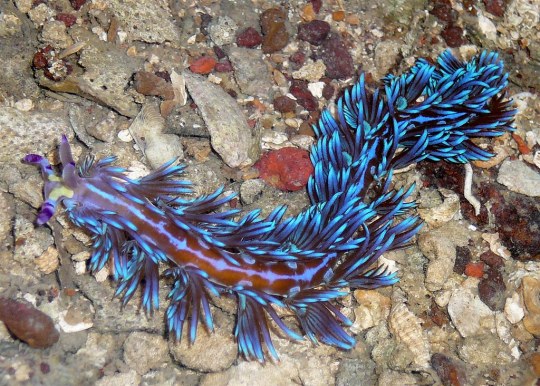
Blue dragon nudibranch (Pteraeolidia ianthina)
Photo by Loh Kok Sheng
#blue dragon#nudibranch#pteraeolidia ianthina#pteraeolidia#facelinidae#aeolidioidea#aeolidida#cladobranchia#dexiarchia#nudibranchia#nudipleura#euthyneura#heterobranchia#gastropoda#mollusca#lophotrochozoa
300 notes
·
View notes
Photo
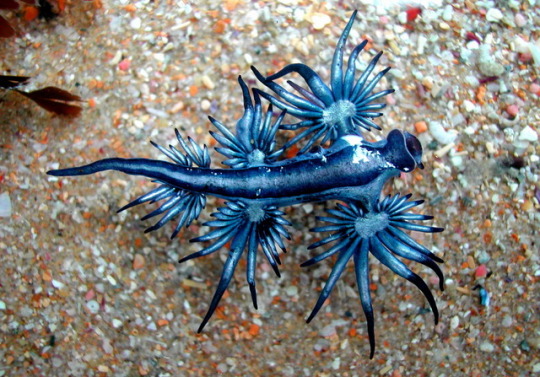
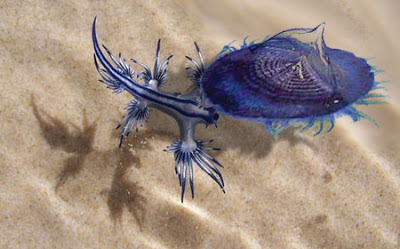

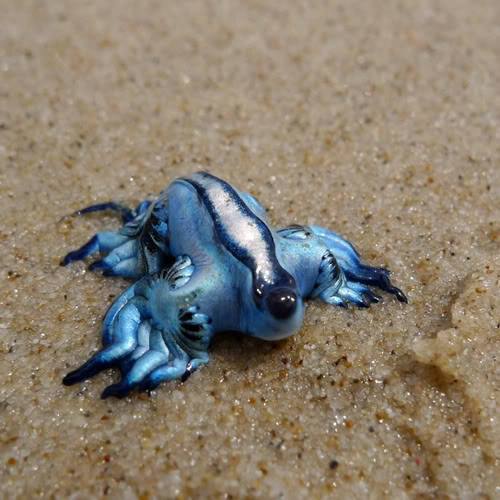
The Glaucus atlanticusis is known as the “sea swallow” or the “blue dragon” and store nematocysts from the jellyfish they feed on, giving them the ability to defend themselves from predators. Sea swallows are actually pelagic, meaning they swim upside down and allow the currents to carry their bodies.
clade Heterobranchia
clade Euthyneura
clade Nudipleura
clade Nudibranchia
clade Dexiarchia
clade Cladobranchia
clade Aeolidida
7 notes
·
View notes
Text
Glaucus Atlanticus ( The Blue Dragon from Pokemon!!!)
These sea slugs are pelagic

This organism looks just like a Pokemon character. Glaucus Atlanticus aka Blue Dragon is very beautiful but also life threating. The Blue Dragons grow up to 3 centimeters long. They float at the surface of the water and on their backs for camouflage. Their belly is blue to blend in with the blue water. And their camouflage for their back blends in with the brightness of the surface of the water. Blue Dragons’ taxonomy classification:
Kingdom: Animalia
Phylum: Mollusca
Class: Gastropoda
(unranked):
clade Heterobranchia
clade Euthyneura
clade Nudipleura
clade Nudibranchia
clade Dexiarchia
clade Cladobranchia
clade Aeolidida
Superfamily: Aeolidioidea
Family: Glaucidae
Genus: Glaucus
Species: G. Atlanticus
1 “These sea slugs are pelagic...Glaucus Atlanticus feeds on other pelagic creatures” such as poisonous creatures. The poison doesn’t affect the Blue Dragons. They the poison for their own use. “ They are known to prey on the dangerously venomous Portuguese man o' war (Physalia physalis); the by-the-wind-sailor (Velella velella); the blue button (Porpita porpita); and the violet snail, Janthina janthina.” Blue Dragons have 1 “been recorded from the east and south coasts of South Africa, European waters, the east coast of Australia, and Mozambique.” “[T]hey live in warm temperate climates in the Southern Pacific, and in circumtropical and Lusitanian environments...”
youtube
The wing-like arms/legs are called appendages. Blue Dragons have six appendages. The finger-like branches are called cerata. Their cerata are able to sting, more than likely due to the fact that they eat venomous organisms. 1“Glaucus is a hermaphrodite, having both male and female reproductive organs.” 1“After mating, both animals produce egg strings.”
youtube
1https://en.wikipedia.org/wiki/Glaucus_atlanticus
2http://eol.org/pages/451180/details
0 notes
Text

Coryphella pseudolotus
#Coryphella pseudolotus#nudibranch#Heterobranchia#Nudibranchia#Cladobranchia#Fionoidea#Coryphellidae#Coryphella#upl
18 notes
·
View notes
Text
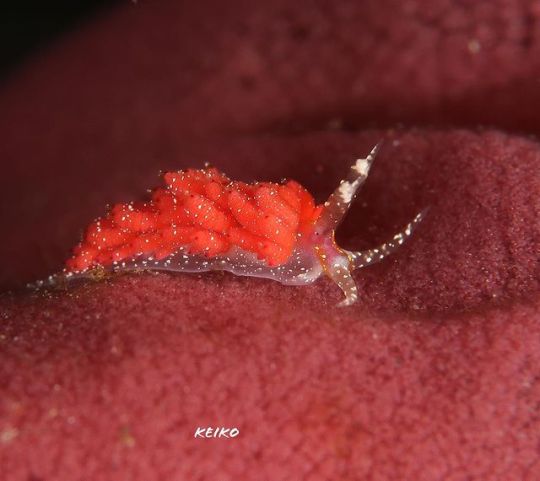
Favorinus mirabilis
#Favorinus mirabilis#sea slug#nudibranch#Heterobranchia#Nudibranchia#Cladobranchia#Aeolidioidea#Facelinidae#Favorinus#upl
19 notes
·
View notes
Text

Flabellina affinis
#Flabellina affinis#nudibranch#Gastropoda#Heterobranchia#Nudibranchia#Cladobranchia#Fionoidea#Flabellinidae#Flabellina#bird#upl
13 notes
·
View notes
Text

Opalescent Nudibranch
#opalescent nudibranch#thick horned nudibranch#Hermissenda crassicornis#nudibranch#Gastropoda#Heterobranchia#Nudibranchia#Cladobranchia#Facelinidae#Hermissenda#upl
11 notes
·
View notes
Text
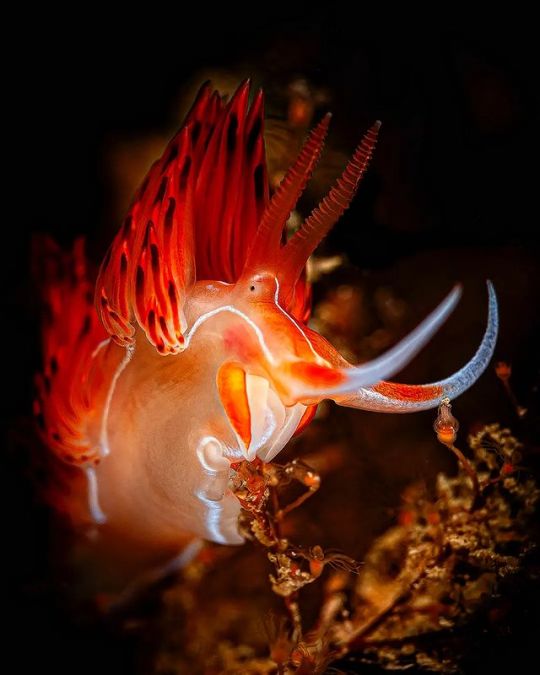
Nemesignis banyulensis
#Nemesignis banyulensis#nudibranch#Gastropoda#Heterobranchia#Nudibranchia#Cladobranchia#Myrrhinidae#Nemesignis#upl
9 notes
·
View notes
Text

Phyllodesmium opalescens
#Phyllodesmium opalescens#nudibranch#Heterobranchia#Euthyneura#Nudipleura#Nudibranchia#Dexiarchia#Cladobranchia#Aeolidida#Aeolidioidea#Facelinidae#Favorininae#Phyllodesmium#upl
6 notes
·
View notes
Photo

Blue Glaucus
#blue glaucus#nudibranch#Glaucus atlanticus#sea slug#blue dragon#upl#aeolid nudibranch#Gastropoda#Heterobranchia#Nudibranchia#Cladobranchia#Glaucidae#Glaucus
62 notes
·
View notes
Photo

Nudibranch (Phyllodesmium briareum)
Photo by Roar Sæthre
#id'ing#nudibranch#phyllodesmium briareum#phyllodesmium#favorininae#facelinidae#aeolidioidea#aeolidida#cladobranchia#dexiarchia#nudibranchia#nudipleura#euthyneura#heterobranchia#gastropoda#mollusca#lophotrochozoa
23 notes
·
View notes
Photo
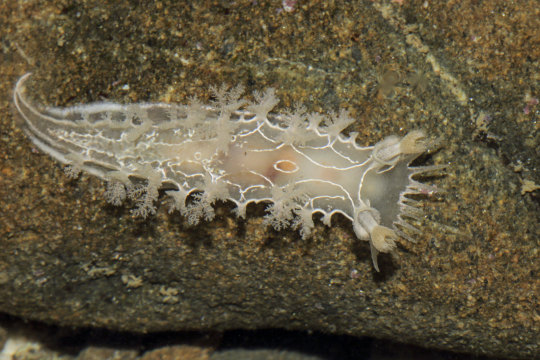
Diamondback nudibranch (Tritonia festiva)
Photo by Marlin Harms
#diamondback nudibranch#tritonia festiva#tritonia#tritoniidae#tritonioidea#dendronotida#cladobranchia#dexiarchia#nudibranchia#nudipleura#euthyneura#heterobranchia#gastropoda#mollusca#lophotrochozoa
34 notes
·
View notes
Photo
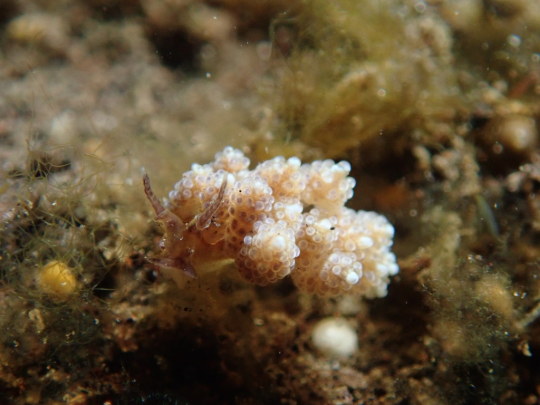
Sea slug (Doto sp.)
Photo by Go Zilla
#sea slug#doto#dotidae#dendronotoidea#cladobranchia#dexiarchia#nudibranchia#nudipleura#euthyneura#heterobranchia#gastropoda#mollusca#lophotrochozoa
7 notes
·
View notes